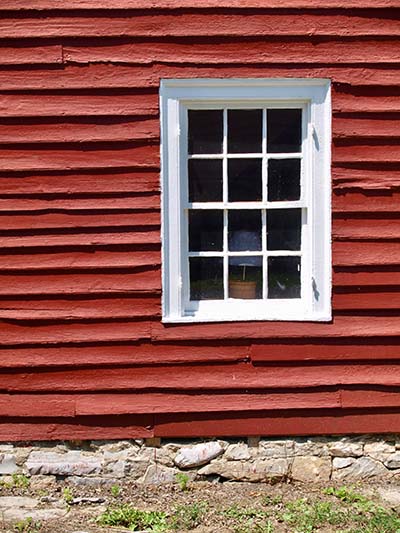Diverting Water Away from Foundation

Part 2 at our Berkley Basement Waterproofing articles.
Ever look out your window to joke that you acquired lakefront property without paying for it? The serious side is that you actually have a water drainage issue around your structure. While it can start out as a minor problem, drainage issues will lead to bigger problems affecting the safety and integrity of the structure of your home.
A lake-sized puddle after a rain or snowmelt is a dramatic sign. The indicators of drainage issues in your yard maybe a little more subtle than that. A few telltale signs that indicate you need to divert water in your yard include overflowing gutters, mulch and topsoil that drifts around the garden, pools of water, and damp topsoil. Walking around your basement, signs of drainage issues include walls where the paint is efflorescence or flaking walls, visible leaks and standing water, the scent of mildew, and visible mold.
Sometimes your drive concrete can shift and sink direct water toward your foundation.
While some of these require serious action, there is one important task that homeowners need to perform. Proper grading of the yard gently slopes the yard away from the home. It can be done at such a slight angle that people may not even know their yard is sloping at all. The practical reason is that the water to get absorbed by the soil. When there are heavy rains, the water sits on top of the lawn. If the grade of lawn is flat, the water will stay there and pool. If there is any grading, the water will flow in the direction of the slope. If your yard slopes toward your home instead of away from it, known as negative grading, water will accumulate near the home. The grading or soil should always slope away from the home to prevent water from accumulating near the foundation.
Water pooling isn’t just limited to your yard. Check how your neighbor’s yard slopes, too. Should the runoff from their yard flow into yours, then you could be getting double the water. This isn’t uncommon. Neighbors have gone to court over just this issue. Before it gets that far, try to work harmoniously with your neighbors to do so on their side of the property line.
Different soil layers can also affect if water pools in your yard. While your topsoil may be fine, hardpan soil or a layer of clay prevents the absorption of water. Clay soil is denser than other soils and doesn’t easily absorb water. Hardpan soil is the same way. This type of soil is usually found just below the top layer and can be any soil that is extremely compacted. Compacted soil makes it hard for anything to get through. Proper slope can compensate for this, insuring the water is diverted away from the house.
Once the slope is settled, next examine that the house isn’t contributing to the problem. Effective gutters and downspouts can move water away from the house. If your gutters are clogged, the water has nowhere to go, so it spills over, runs down the side of the home and lands right next to the foundation. If your downspouts are too short, they won’t transport the water far enough away from the home.
Your yard isn’t the only cause of standing water. How you shovel your driveway in winter could also pose a problem, especially if it is connected to your house. Just like your yard, your driveway should slope away from the home. You could have cracks in your driveway that allow water in. If your driveway butts up against your house, you may have a gap where the two meet. This lets water run down the exterior of the foundation, instead of properly draining away from it.
Negative Effects of Water Drainage Issues
Water may seem harmless enough, but it can cause a number of problems for homeowners – ones that can be a minor inconvenience or cause thousands of dollars of damage. Here are a few reasons you’ll want to know how to divert water away from your home, so you can fix the issue before it becomes a major problem.
Mold
Mold loves to grow in damp places, so if poor drainage is creating such places in or around your home, you could experience mold issues. Not only is mold just plain gross, it can also cause health issues like eye and skin irritation, coughing, wheezing and lung infections.
Mosquitos And Other Pests
If water is pooling in your yard or sitting stagnant, it can quickly become a breeding ground for mosquitos and other pests. Mosquitos breed in shallow water and will typically lay their eggs near stagnant water.
Along with being a nuisance, they can also carry West Nile, Zika and malaria. Standing water can also be a great water supply for rodents, who will build nests nearby such resources.
Drowned Plants, Grass and Flowers
Yes, plants need water to live, but they also need oxygen. When water has nowhere to go and saturates the soil, it fills the pockets of air that normally deliver much needed oxygen to the roots.
Basement Leaks
If you are not properly diverting water from your home, it will find a place to go. And that typically is the basement level of your home, where it can get in through window wells, cracks in the walls or floor, mortar joints or porous concrete.
Water in the basement can cause stains and musty smells. It can also damage items you’re storing and makes it hard to use the area as livable space. Worse, water in the basement can cause – or be the result of – foundation issues.
Foundation Damage
The foundation of a home is arguably the most important part of the house. The integrity of a structure lies in its foundation. Your entire house sits on the foundation, so any damage to it can be a major financial and safety concern.
It can also destroy the value of your home or, worse, make your home unsellable. The threat of damage to your foundation is the biggest reason you need to divert water from your home.
Water accumulating near the house can result in structural movement. Soil will typically expand when it’s wet and contract when it’s dry. Over time, these expansion and contraction forces will cause structural movement. If the problem is not corrected, serious structural damage can occur.
If you’ve had water issues for some time, here are a few signs of structural movement to check for:
- Cracks in the foundation or walls
- Doors that stick or don’t close properly
- Uneven floors
- Bowed walls
Part 2 at our Berkley Basement Waterproofing location.

